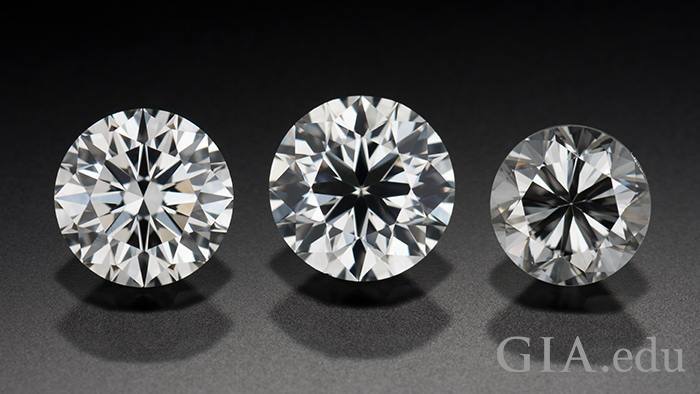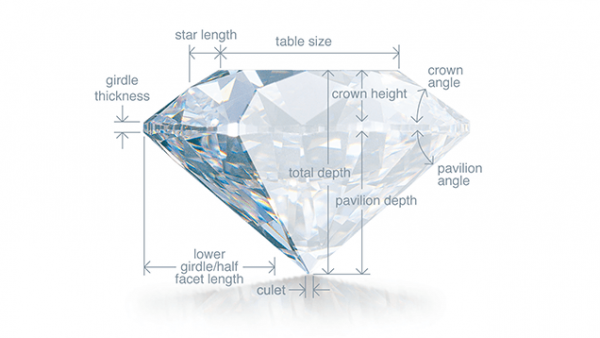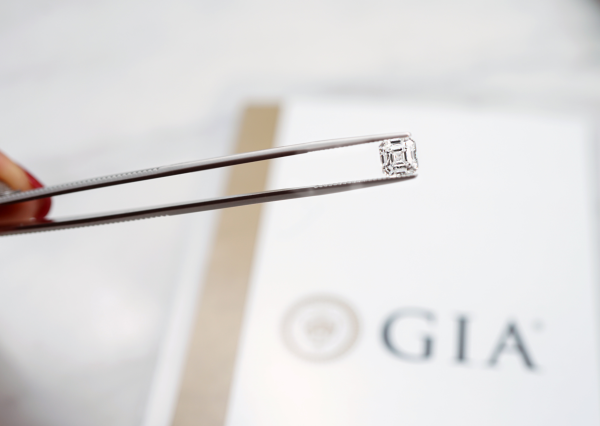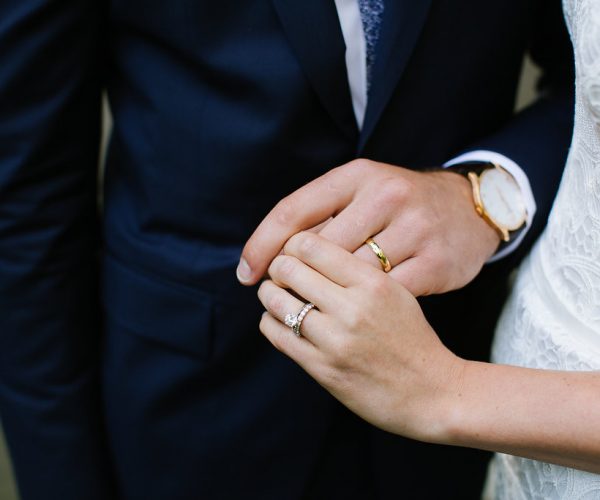Be Inspired
Diamond Education
Finance

Diamond size or clarity? That’s a question we get asked a lot. Size and clarity are two of the four critical characteristics determining the quality of a diamond, with cut and colour being the other two. Together they are the 4C’s introduced by GIA, the Gemmological Institute of America, to grade the quality of a diamond. To make it easier for you to find out if size or clarity is best, we’ve put together this helpful guide.
Here’s what this guide will cover:
While they are used interchangeably most of the time, diamond size and carat size are two completely different metrics. Carat size measures the weight of a diamond. One carat is equal to 0.2 grams or 200 milligrams.
The Diamond size refers to the diamond’s length and width which is measured in millimeters. A one-carat (1 ct) diamond would usually be between 6.1mm to 6.8mm.
While some stones are cut deeper, others are cut shallower, which means that there could be two diamonds with the same carat weight but two different sizes. The thickness of the diamond’s girdle, which is the thin border between the bottom pavilion and the crown of the stone, can also add to this.

For example, here’s a video of three gorgeous radiant cut diamonds in our collection. Even though they seem like they are the same in size, all three have different carat sizes!
Also important to know is that diamond sizes differ with each cut. Generally, pear, oval, and marquis shapes appear bigger than the cushion, Asscher, and round brilliant cuts. You can find out more about different diamond cuts here.
Thanks to Hollywood celebrities like Elizabeth Taylor and Kim Kardashian, many tend to believe that the bigger the diamond is, the better it is in quality. However, this isn’t necessarily always the case. To explain, let’s go back to the 4 C’s we mentioned earlier- carat, colour, clarity, and cut– all the criteria that an ideal diamond needs to possess. Say you are shown a 2 or 3-carat diamond that’s big, but has poor clarity, colour (white diamonds are the highest in quality), and is poorly cut. In this case, a smaller-sized diamond that passes all the 4C’s, is a much better option.

A diamond’s size is only one factor when making a purchase. This is why, here at Kush Diamonds, we only sell stones of the highest standards, each fully GIA-certified before purchase.
This is because, while larger weights of stones for a comparable price might seem like a good idea, the diamond in the finished piece will simply look grey or brown in colour. Our team would never use such stones, as they would display none of the astonishing see-through brilliance or radiance of the best of diamonds.
Formed deep within the ground under ideal pressure and heat conditions, natural diamonds contain birthmarks that are called ‘inclusions’ by gemological experts and sellers. Think of these as nature’s fingerprint embedded on each diamond enhancing its uniqueness.
Most diamonds on the market have inclusions naked to the eye and are only visible under 10X magnification. There are some diamonds without any inclusions even under 10X magnification and these are extremely rare stones, known as Flawless Diamonds.
Diamond clarity describes the absence of inclusions- the higher the clarity, the fewer inclusions it would have. High clarity also means more brilliance and value.
When it comes to assessing the clarity of our diamonds, we go through the GIA Clarity Scale which contains 11 grades. See the below diamond clarity chart to explain what each grade is. Note, that at Kush Diamonds we only sell diamonds from the highest FL grade to the upper scale of the S1I grade. This is why, when you go shopping for wholesale diamonds or diamond engagement rings at our Melbourne store, we will only ever show stones containing colourless inclusions invisible to the naked eye.
Now that we’ve learned what diamond sizes and clarity are, let’s come back to the question of ‘diamond size or clarity?’. The answer to this lies in your preferences and your budget.
A diamond’s size is only one factor when making a purchase. This is why, here at Kush Diamonds, we only sell stones of the highest standards, each fully GIA certified before purchase.
This is because, while larger weights of stones for a comparable price might seem like a good idea, the diamond in the finished piece will simply look grey or brown in colour. Our team would never use such stones, as they would display none of the astonishing see-through brilliance or radiance of the best of diamonds.

Want to learn more before you dive headfirst into the world of engagement rings? Let us share with you some exciting trends and quick guides to get you on the right path to finding the perfect diamond ring for your partner.